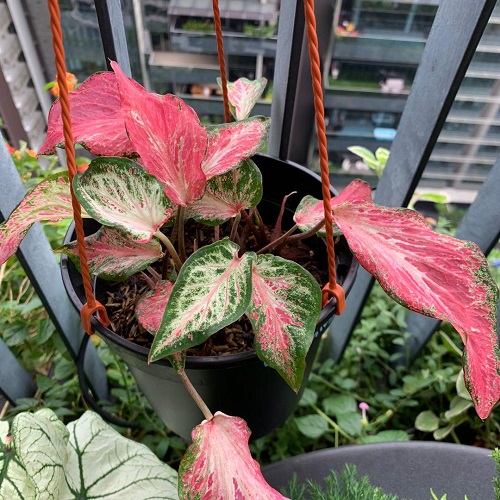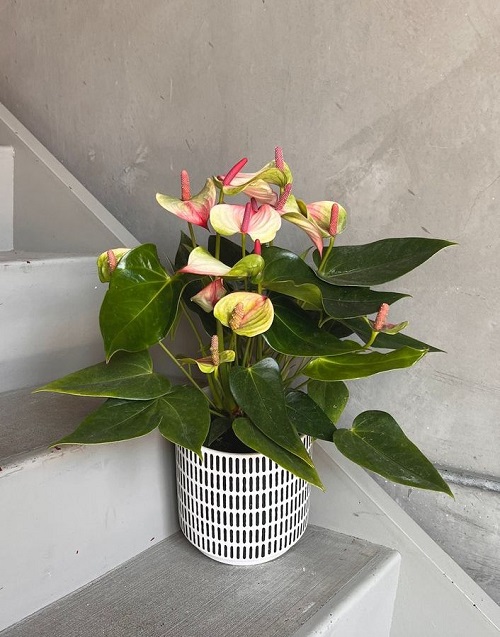Are you aware of the Indoor Plants That Can Change Color? Here are the most beautiful ones you can grow with changing hues!
Imagine an indoor garden that not only thrives but also performs a mesmerizing display of color transformation right before your eyes! These aren’t your average houseplants; these are living pieces of art that evolve, captivate, and continually surprise you.
From leaves that undergo vivid makeovers to flowers that shift their hues like mood rings, these unique indoor plants offer a dynamic spectacle you won’t want to miss! Here are the most beautiful Indoor Plants That Can Change Color!
Here are the most colorful plants to grow indoors in water
The Science Behind Color-Changing Indoor Plants
The ability of certain indoor plants to change color isn’t just an aesthetic marvel; it’s rooted in complex biological processes that can impact their growth, survival, and reproduction. Understanding these mechanisms can offer insights into both the natural world and how to care for these extraordinary plants. So, what precisely triggers these colorful transformations, and do they offer any advantages to the plant? Let’s delve into the science of it all.
Pigments and Plant Cells
The primary players in the color game are pigments—chemical compounds stored in plant cells. Chlorophyll (green), anthocyanins (reds, purples, blues), carotenoids (oranges, yellows), and flavonoids (yellows) are the most common.
Chlorophyll Breakdown
In some plants, the decrease in chlorophyll due to maturation or environmental factors allows other pigments to become more prominent, thus altering the leaf color.
Anthocyanin Production
Light, temperature, and pH levels can stimulate anthocyanin production, which in turn adds reds, purples, or blues to leaves and flowers.
Tricolor Houseplants with Fantastic Foliage
Indoor Plants That Change the Color of Their Leaves
1. Croton
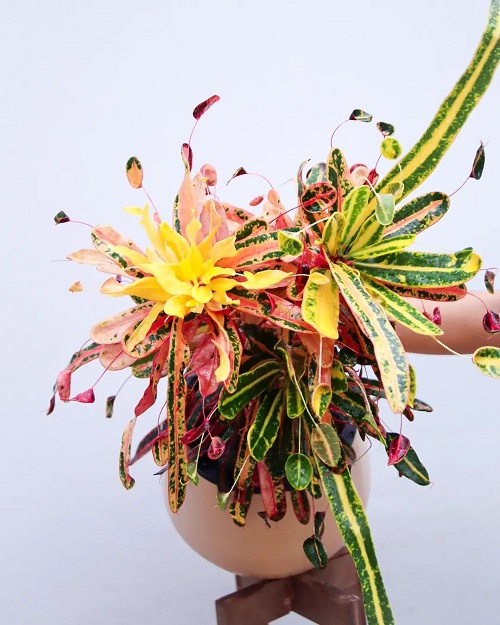
Botanical Name: Codiaeum variegatum
- Initial Color: Green
- Changed Color: Yellow, red, or orange
- Reason for Transition: Exposure to bright, indirect light enhances the vibrant colors. The more sunlight it gets, the more colorful the leaves become.
2. Begonias

Botanical Name: Begonia
- Initial Color: Green or purple or any single hue depending on the variety
- Changed Color: Multicolor patterns including pink, red, or silver or any color/s depending on the variety
- Reason for Transition: Light and humidity levels can impact the coloration of the leaves.
Have a look at the best colorful houseplants you can grow here
3. Polka Dot Plant
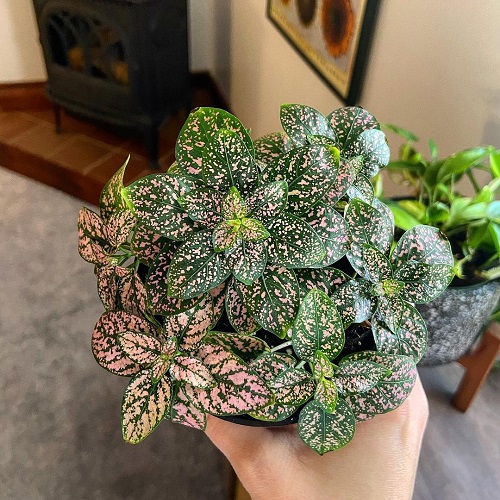
Botanical Name: Hypoestes phyllostachya
- Initial Color: Green or any single hue depending on the variety
- Changed Color: Pink or red or any color/s depending on the variety
- Reason for Transition: The plant naturally develops these spots as it matures, and brighter light can intensify the coloration.
4. Caladiums
Botanical Name: Caladium
- Initial Color: Green or red or any single hue depending on the variety
- Changed Color: White, pink, red or any color/s depending on the variety
- Reason for Transition: As the plant matures and depending on light exposure, the leaf colors can become more vibrant.
5. Autumn Fern

Botanical Name: Dryopteris erythrosora
- Initial Color: Copper or orange
- Changed Color: Green
- Reason for Transition: As the fern matures, the initial copper or orange fronds gradually change to a more deep, evergreen color. This transition is a natural part of the plant’s growth cycle and is not significantly influenced by environmental factors.
Best Colorful Ferns You Must Grow in the Garden
6. Peace Lily
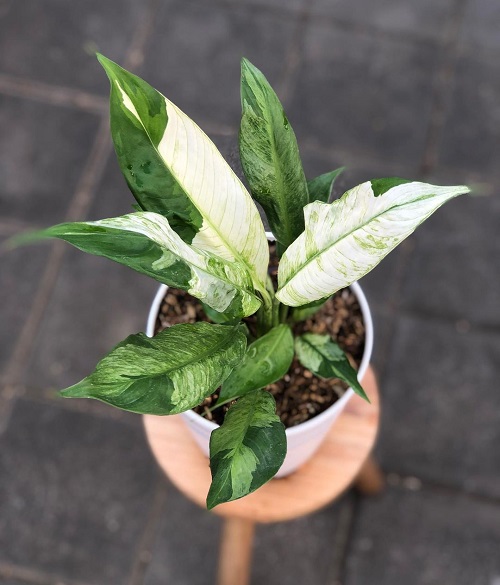
Botanical Name: Spathiphyllum
- Initial Color: Green
- Changed Color: White
- Reason for Transition: The leaves of the plant start as green and slow transition to white color. The bonus here is its spathes – The “flowers” are actually specialized leaf bracts that change from green to white as they open.
Indoor Plants That Change Color of Their Flowers
7. Christmas Cactus
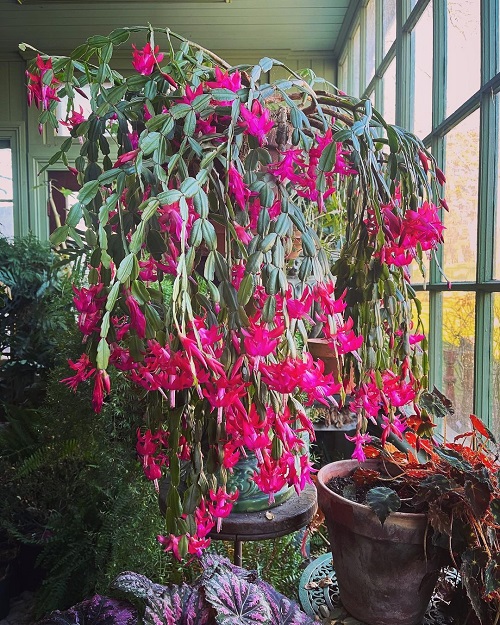
Botanical Name: Schlumbergera
- Initial Color: White or pink
- Changed Color: Red or purple
- Reason for Transition: Flower color deepens as the blossoms mature, especially when exposed to cooler temperatures.
Christmas Cactus Turning Purple | 7 Reasons and Solutions
8. Oxalis
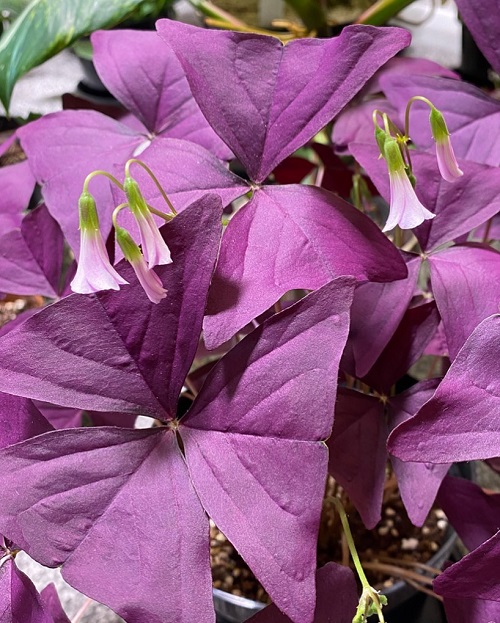
Botanical Name: Oxalis Triangularis
- Initial Color: Light purple
- Changed Color: Dark purple
- Reason for Transition: Flower color deepens with age and transitions from white to red/maroon. It can be influenced by light conditions.
9. Anthurium
Botanical Name: Anthurium
- Initial Color: Red or pink
- Changed Color: Green
- Reason for Transition: As the flowers age, they may slowly transition to a greenish hue.

